Here Comes Everybody
Francis McKee
Looking at these photos it becomes clear what an extraordinary enterprise underpins this body of work. Spanning nearly forty years, Alan Dimmick’s images document his personal life, the Scottish landscape, the changing urban terrain of Glasgow and the contemporary art scene in that city. To be more precise, the documentation of that art scene permeates all those other categories. And, again for the sake of precision, it’s not simply documentation of an art scene: rather it is documentation of a community.
Over much of the period Dimmick has been working, Glasgow School of Art has offered a course called Environmental Art. It is seen as one of the catalysts for contemporary art in the city and its unofficial motto, echoing the Artist’s Placement Group in London, has been ‘context is 50% of the work’. This provides a useful starting point for a consideration of this collection of photographs. On the one hand, the pictures can be considered on their own individual merits in terms of composition, technical achievement, or aesthetic quality. And from a different perspective, the naming of the subjects in each photograph adds a new dimension of interpretation as we recognize so many artists and, by association, think of their work. In both cases, context plays a vital role. Not everyone in the photographs is an artist and not every location is a gallery or studio but the landscapes and the background of the city carry an implicit critique of the particular art world portrayed. The period covered by the photographs coincides with the fading of industrial Glasgow, the traumatic decline of one of the world’s first great industrial centres. It also charts the gradual regeneration of the city, sometimes sporadic and often intertwined with the growth of the arts both in Glasgow and across Scotland. More widely too, it is a time in which Scotland’s political landscape evolves: the Scottish Parliament is established and independence becomes a serious and credible issue. The starkness of Glasgow is often highlighted in Dimmick’s photographs, underlined through his use of black and white, as we glimpse the raw ruins of a past world (the ‘Dead Slow’ sign on the Clyde in 1987 and the Bridge to Nowhere in Anderston most obviously). Even then, the bridge to nowhere reminds us of Glasgow’s post-war modernist architecture and its influence on the work of so many artists in the city such as Martin Boyce and Toby Paterson. Architecture in this collection of images does not dwell on art institutions: instead, it revolves around more temporary spaces, rough and ready artists’ studios, artist-run galleries and tenement flats. This is true to the time, documenting the spaces where art takes root and grows or the spaces where the social life of the artists generates new ideas and projects.
It is interesting how the Scottish landscape also informs the art community represented here. Glasgow may be an urban centre but the highlands are within easy reach and forays across Scotland pepper this collection of images. It’s typical of how the landscape projects its presence into the urban centres of Scotland and how it offers an easy temporary refuge from the cities when that’s needed.
At the heart of the collection are the people. Not all artists, not all famous art world luminaries: Jeff Koons turns up in one photograph as if to demonstrate how alien his world is to that of Glasgow. Again context is everything – what is presented is a much wider community that supports and surrounds the artists – children, pets, partners, parties, openings, cafes, tenement closes, bedrooms, livings rooms, cars (that Lada...). The everyday infrastructure of life. The glue that binds this all together is friendship in its widest forms. Dimmick documents a multitude of overlapping circles of friends, sometimes deep friendships, sometimes sporadic and transient.
Celine Condorelli has written recently on the importance of friendship in The Company She Keeps (2014), focusing in particular on how friendship permeates the art world. Looking beyond the dangers of the clique, she identifies a profound strength in this situation:
There are, however, also enabling powers to friendship. What is the potential of doing something in friendship? There is an emancipatory dimension to choosing one’s allies, committing to issues and deciding to take them on, which can be a force that propels us forward. I think there is a collective aspect to this empowerment, which is the congruence between friendship and solidarity: the knowledge of engaging in a common project, of contributing to building the world, which is also how friendship leads to politics. This of course is also a drive to self-organisation.
That quietly political moment Condorelli identifies as leading to self-organisation is embodied in the community documented
by Dimmick. It’s almost a cliché now to talk of the DIY spirit in Glasgow but when you look at the locations in these photographs and the sheer amount of activity that is implied, they testify to the autonomy of that world.
Another aspect of a wider political sensibility guides the selection of these photographs and that is the absence of many of the art
world’s hierarchies. At its worst the art world spawns micro- measured levels of status - reinforced annually by ‘power 100’ lists, VIP invitations, unspoken access and exclusion...
Dimmick’s subjects are filtered through the prism of his ecumenical vision. Curators and artists jostle for exposure with dogs, cliffs, favourite jackets, fruit, cows, seagulls, architectural details and electrical cables. There are some more formal shots of famous artists but, equally, formal portraits of the unassuming figures in the art community pointedly challenge them. The portrait of Alasdair Gray in Dowanside Lane in 1985, for example, sits easily within the category of ‘celebrity author’ but it follows Ian, Lift Man taken by Dimmick in 73 Robertson St in 2005. For anyone in that period who visited The Modern Institute or the artists’ studios in the same building, Ian was the better-known face. His inclusion invites us to recognise that his modest but regular presence in the art community made a contribution. The selection, editing and sequencing of these images offers its own challenge to the narrow, blinkered approaches of art history.
The medium of photography itself widens this challenge. Dimmick’s work embraces the documentary and the intimate. His practice straddles the two often very separate worlds: photography and contemporary art. While the borders of those worlds are not entirely closed it’s clear they have different rites and customs. Dimmick then is oddly situated both within and outwith the world he is documenting, a position that has afforded him some distance and insight as the city’s arts community has evolved.
There are some parallels between Dimmick’s work and that of the older Dutch photographer Benjamin Katz. In portraits of artists such as Sigmar Polke, Gerhard Richter, Albert Oehlen, Isa Genzken, George Baselitz and Rosemarie Trockel, Katz succeeds in creating the sense of an artistic community that spanned the Netherlands and Germany. There is a similar sense of shared intimacy among those artists and Katz captures glimpses of their informal life beyond the studios and galleries. That quality of belonging and standing outside the scene is also evident. In contrast, though, the continental scene portrayed is more sedate and never strays too far from the serious. Dimmick’s pictures record a younger, wilder scene: further from the centres of art, power and money. Seriousness in Scotland is fused with elements of risk and abandon.
Markus Lüpertz describes Katz’s images as:
Often photos which show his friends while working – or while posing – while celebrating – while thinking – while meditating. Usually animated – in motion – together – with it – and sometimes surprised – and always in black and white. Black and white – the colour of reality, for we are all better-looking in black and white...
Dimmick too has a preference for black and white that may be the colour of reality but also highlights the basic power of light in art and photography. It reminds us of the world of colour and form inhabited by artists. Black and white has a levelling effect too, rendering everyone equal and linked across time. By default, given that this collection spans forty years, it documents a vital period in the history of cameras and photography. Arguably film cameras reached their peak in the eighties and by the nineties primitive, but viable, digital cameras started to emerge. The slow decline of film, its recent partial revival, the rise and fall of polaroid are all reflected in Dimmick’s work. There is an underlying theme of the materiality of the image, expressed most obviously in the Ham Radio photograph but also in an image such as My Lada where the negative’s sprocket holes are included.
That emphasis on the materiality of the medium carries through to the various images of GM8BJF Shack, the 2009 portrait of Luke Fowler with film reels or the performance image of Uncle John and Whitelock in Transmission Gallery. Several of these images and the frequent band shots also evoke an absent medium: sound. Glasgow’s art scene is well known for the artists’ relationship to music and, more recently, sound art. The photos here mutely testify to that affinity and simultaneously acknowledge the limits of the still photograph in this realm.
Dimmick’s handling of this theme recalls the work of two American photographers who worked in the midst of broad art and music scenes. John Cohen’s work in the 1950s and 1960s covered Abstract Expressionism, early New York performance in tandem with his documentation of the beat generation, traditional music, and Greenwich Village folk. Elliott Landy, in the late 1960s, documented the music and art scene in the Vermont town of Woodstock. Both photographers worked from within the community itself and both recorded events over a long period of time, affording us a glimpse into the lives of artists beyond their public activities. Neither can capture the sound of the era any more than Dimmick can in Glasgow. But all three photographers pinpoint the moments of ecstasy and intimacy that underpin the work of the artists around, finding those moments in modest, everyday situations.




© Alan Dimmick 2025